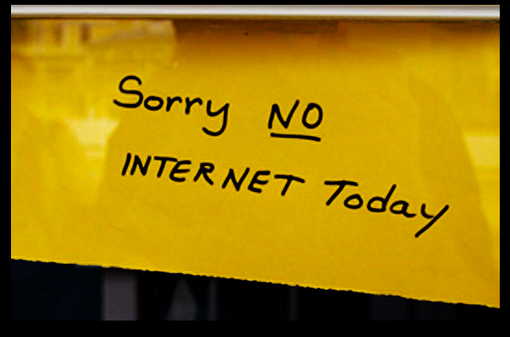In 2020, the way people worked changed dramatically, as remote work became the new normal. However, companies have now resorted to reopening their offices. Last year, Amazon has been scrambling to get its employees back to the office, asking some to relocate even. Even Zoom, a champion of remote work and an ironic example here, called employees back to office. In fact, there are employees who do want to head back to office. But then, there are some employers who have seen more productivity with distributed work.
Read more: What employees want: The modern employee wants responsibility & action from the employer
Some employees even want to attend office, especially senior management. Many founders are becoming reluctant to give permanent WFH to their employees, suggesting that the era of remote working may be soon behind us. This is especially true in the context of a funding winter for Indian startups, with lesser opportunities in both STEM and non-STEM roles.
Why are employers reluctant to offer remote working to their employees?
Is WFH Less Productive?
Recently, a study published in Nature indicated that remote teams are less likely to make significant discoveries than onsite teams, suggesting the need for a balanced approach to digital and physical infrastructure to foster innovation.
Lead co-author Professor Carl Frey, Dieter Schwarz Associate Professor of AI & Work at the Oxford Internet Institute and Director of the Oxford Martin Programme on the Future of Work, said, “The computer revolution and the rise of the Internet has connected talent from all around the world yet, rather than accelerating as many predicted, studies have shown that breakthrough innovation is in decline.
While remote collaboration via the Internet can bring together diverse pools of talent, it also makes it harder to fuse their ideas… This should serve as a reminder there is unlikely to be a pure technological solution to our innovation problems
Professor Carl Frey, Dieter Schwarz Associate Professor of AI & Work at the Oxford Internet Institute and Director of the Oxford Martin Programme on the Future of Work
“While remote collaboration via the Internet can bring together diverse pools of talent, it also makes it harder to fuse their ideas. Today, there is much talk about Artificial Intelligence supercharging innovation. Yet many predicted the same with the advent of the PC and the Internet. This should serve as a reminder there is unlikely to be a pure technological solution to our innovation problems.”
Discouraging as this is for those rooting for WFH, data from other corporate offices tell a different tale.
Many Corporate Offices Think Differently
Business leaders across a variety of industries expect the push toward all-remote and hybrid-remote work to continue, despite the current wave of back-to-office mandates. According to a survey by the Federal Reserve Bank of Atlanta, the University of Chicago, and Stanford, executives say about 24% of their workforce is already partially or fully remote, and they expect that to rise in coming years.
Remote and hybrid work are here to stay. And instead of demanding employees to come to work, companies need to think of work-life harmony
Rajat Mishra, CEO of Prezent
“Retention in 2024 requires solving for hybrid and remote work,” Rajat Mishra, CEO of Prezent, a 100% remote global company told The Tech Panda. He continued, “Remote and hybrid work are here to stay. And instead of demanding employees to come to work, companies need to think of work-life harmony. What is most important for an employee? For some employees it is time with their kids. For some it is the 8:00 AM Starbucks. With a combination of hiring for independence coupled with rituals – it is possible to achieve work-life harmony in a hybrid world and drive employee retention.”
In fact, the younger generation might be more adept at working remotely. According to data from Internshala, a career-tech platform, in 2023, virtual internships accounted for a substantial 48%, offering WFH flexibility, while 42% remained in-office internships.
Based on the report from Workmeter, working from home increases 5x the focus and employees’ productivity. The gap is even wider on a managerial level with 15x of difference
Eduard Moreno, Head of Global Engagement Strategy at Gaddex
“Based on the report from Workmeter, working from home increases 5x the focus and employees’ productivity. The gap is even wider on a managerial level with 15x of difference. The report Effective strategies to apply WFH in Your Company helps companies leverage the flexibility and new work environment we work in nowadays,” says Eduard Moreno, Head of Global Engagement Strategy at Gaddex.
This month Atlassian Corporation launched a report, ‘Lessons Learned: 1,000 Days of Distributed at Atlassian’, that details how the company tackled challenges associated with a distributed work model and what worked – and what failed for the company after implementing its Team Anywhere policy. According to the report, an overwhelming majority of executives (99%) agree that work will only become more distributed in the future. The research found that all large organizations work in a distributed way, whether they have an in-office policy or not. Distributed work is essentially done online by collaborating across locations vs shoulder-to-shoulder.
The company concludes that their approach has been a success as it is able to attract and retain top talent. Also, the representation of women at Atlassian in India is more than 2x higher now since practicing Team Anywhere. According to 92% of the employees, the company’s distributed work policy allows them to do their best work, and 91% say it’s an important reason why they stay at Atlassian.
We want to help teams do distributed work well – and the best way to do that is to live it ourselves. Distributed work isn’t a sacrifice – it’s a huge opportunity for businesses and for people — especially underrepresented groups. We’re finding that teams designed to be distributed are actually figuring out better ways of working
Annie Dean, Head of Team Anywhere at Atlassian
Annie Dean, Head of Team Anywhere at Atlassian, said, “We want to help teams do distributed work well – and the best way to do that is to live it ourselves. Distributed work isn’t a sacrifice – it’s a huge opportunity for businesses and for people — especially underrepresented groups. We’re finding that teams designed to be distributed are actually figuring out better ways of working.”
“Atlassian is living proof that location flexibility, vibrant offices, and employee engagement can co-exist, even at scale. Our evidence-based approach to distributed work is an opportunity to solve the challenges our customers will face,” she added.
Where, Not How
Some of the findings from the survey say that the biggest blockers to productivity, connection, and innovation are not location-based. 98% of the executives agree that where teams work isn’t the problem, it’s how. As collaboration increasingly happens online, work and how it gets down will become more of a cultural constant than offices.
Neglecting to adapt to the distributed new normal is not just a missed opportunity but a detriment to an organization’s ability to harness its full business potential. It’s not rocket science: when teams work smarter, they can achieve more, faster, and with better results
The report concludes by stating that “Neglecting to adapt to the distributed new normal is not just a missed opportunity but a detriment to an organization’s ability to harness its full business potential. It’s not rocket science: when teams work smarter, they can achieve more, faster, and with better results.”
However, there are still many, which incudes employees, who prefer the daily commute and working from office.
Some Employees Prefer Office
According to a survey by The Office Pass (TOP), a Delhi NCR based coworking and managed office operator for SMBs, 67% of employees want to work from the office (34% want to work from the office but only 2-3 times a week; whereas 33% want to work from the office regularly). 18% want to work from an office close to their place of residence (i.e. neighbourhood coworking). The remaining 15% prefer working from home.
The 2023 survey demonstrates that employees prefer the fast-paced environment of an office over the cozy atmosphere of working from home. In this situation, both coworking centres and traditional offices are feasible options for transitioning out of the pandemic-induced lifestyle we have all experienced
Nikhil Madan, Co-founder of TOP
Nikhil Madan, Co-founder of TOP said, “The challenges faced by the workforce and individuals during the pandemic era, now seem to be largely behind us. The 2023 survey demonstrates that employees prefer the fast-paced environment of an office over the cozy atmosphere of working from home. In this situation, both coworking centres and traditional offices are feasible options for transitioning out of the pandemic-induced lifestyle we have all experienced.”
Many don’t agree with this though, and to be fair, within the employees, the propensity to work from the office is the highest among senior management (77%) followed by middle management (66%) and finally junior-level employees (65%).
Also, when it comes to departments, coworking was found to be the most preferred working place for employees in human resources (88%), sales and marketing (70%), admin (69%), and procurement and logistics (67%) functions.
“Networking opportunities” with their colleagues was highlighted as the main driver for going to a formal office, whereas “a strong community to overcome loneliness and isolation” was highlighted as the main reason for opting for a coworking space. Put together, both these insights may point towards some employee burnout on the back of 24 harsh months of lockdowns and permanent WFH, with employees now eager to network and be a part of a larger community.
“Networking opportunities” with their colleagues was highlighted as the main driver for going to a formal office, whereas “a strong community to overcome loneliness and isolation” was highlighted as the main reason for opting for a coworking space. Put together, both these insights may point towards some employee burnout on the back of 24 harsh months of lockdowns and permanent WFH, with employees now eager to network and be a part of a larger community.
Founder or Employer Views on Work Preferences Differ
The survey also found that 54% of founders want their employees to come to the office regularly. Another 26% are open to their employees working out of a coworking space if that helps in bringing them back to work. 20% of founders are open to letting their employees work from the office in a hybrid manner (2-3 days a week).
Read more: Navigating India’s evolving job market: The imperative of continuous learning & upskilling
Surprisingly, none of the founders want to give permanent WFH to their employees. Founders or employers who are planning to hire more than 50 employees in the coming year are keener to bring their employees back to formal work. Founders hiring 25-50 employees prefer a coworking office (67%) over a formal office, whereas employers hiring less than 25 people were split down the middle between coworking (44%) and traditional offices (44%), as long as their employees were comfortable.
Some employers (12%) with small teams are even open to permanent WFH. This could mean that as organisations grow, they start to place more focus on productivity and business momentum. However, the Atlassian survey shows otherwise.
With such divided opinions, a hybrid model might be the answer. Whichever way works for employers, can be adopted. Still, undoubtedly, global work culture is changing.












